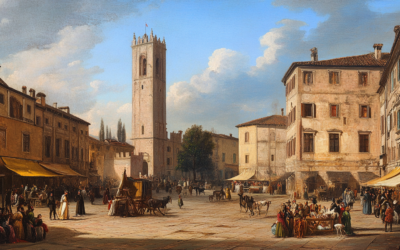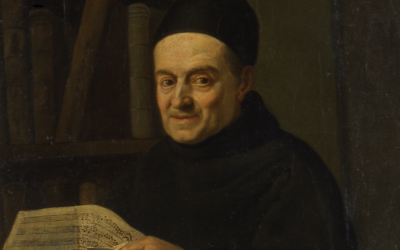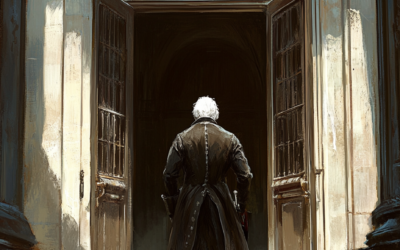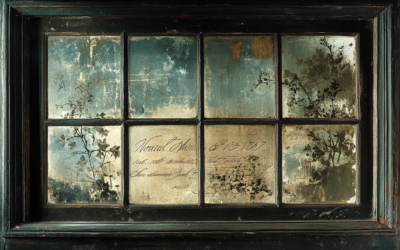Mozart’s Violin Pieces
Substitutes for Failed Movements?
Three violin compositions by Mozart—K.261 Adagio in E major, K.269 Rondo in B-flat major, and K.373 Rondo in C major—were designed to replace movements deemed unsuccessful in his violin concertos K.207 and K.219.
Scholars suggest that K.261 was written in 1776 to replace the second movement of K.219, K.269 between 1775 and 1777 to substitute the finale of K.207, and K.373 in 1781. Yet, despite these revisions, the overall quality of the original concertos remains unchanged.
The intriguing part is that Mozart himself dedicated more attention in his correspondence to these minor works than to his larger violin concertos.
Could this be a sign of the less-than-ideal success of these works? Or was Mozart simply grasping at straws to salvage unsatisfactory movements?
Mozart: The Fall of the Gods
This book compiles the results of our studies on 18th-century music and Mozart, who has been revered for over two centuries as a deity. We dismantle the baseless cult of Mozart and strip away the clichés that falsely present him as a natural genius, revealing the contradictions in conventional biographies. In this work, divided into two parts, we identify and critically analyze several contradictory points in the vast Mozart bibliography. Each of the nearly 2,000 citations is meticulously sourced, allowing readers to verify the findings. This critical biography of Mozart emerges from these premises, addressing the numerous doubts raised by researchers.
"Mozart focused more on these trivial violin replacements in his letters than on the grand violin concertos themselves—a sign, perhaps, of his own recognition of their failings."
Mozart: The Fall of the Gods
Substitutes for Failed Movements?
Three of Mozart’s lesser-known violin compositions—K.261, K.269, and K.373—were never intended to stand on their own. Instead, they were written as replacements for movements in his earlier violin concertos that were, by all accounts, unsatisfactory. The Adagio K.261, composed in 1776, was meant to replace the second movement of the Violin Concerto K.219. The Rondo K.269, composed between 1775 and 1777, was designed to substitute the finale of K.207. Finally, K.373, composed much later in 1781, presents another curious case of substitution, though this time for an unknown purpose. The obvious question is: Why did Mozart feel compelled to rewrite these sections?
Dull Replacements, Questionable Quality
Despite these revisions, the new versions of the movements—K.261 and K.269—add nothing of substance to the overall quality of the violin concertos. The K.373, likewise, does little to improve on the originals. These works stand as testimony to Mozart’s creative struggle in the realm of violin music. What is particularly telling is that the only definitive evidence of Mozart’s authorship for these replacement movements comes from his own letters. It is odd, perhaps even suspicious, that the composer focuses on these minor works in his correspondence, while never once discussing his larger violin concertos. Was he, perhaps, aware of their limitations?
The Italian Connection
The Rondo K.373 was allegedly composed for the Italian violinist Antonio Brunetti, who was reportedly dissatisfied with the original movements. However, Brunetti was not only a violinist but also a composer in his own right. It is puzzling why he would need Mozart’s assistance to ‘fix’ movements he didn’t like. Adding to the strangeness is the fact that Mozart and Brunetti were not on good terms, making it even more perplexing why Mozart would have bothered to compose this replacement six years after the original concerto was written.
The “Concertone” Enigma
Another curious entry in Mozart’s violin output is the Concertone, composed in May 1774. Although it precedes his five violin concertos by only a year, its style is noticeably more archaic, presenting a stark contrast to the later works. The Concertone includes Baroque-like echoes of Vivaldi, particularly in its first movement, as well as an overly long and rather tedious Andantino. This piece may have been one of the reasons for Mozart’s struggles to secure employment during his travels to Mannheim, Munich, and Paris. Indeed, compared to the works of contemporaries such as Saint-George, the Concertone feels antiquated and out of place.
You May Also Like
Debunking the Romantic Virtuoso Image
The image of Mozart as a Romantic-era virtuoso is a misleading anachronism, fuelled by 19th-century propaganda. Wolfgang was no transcendental pianist, but a product of an era where music was more galant than heroic.
The Visit to Verona
In Verona, young Wolfgang Mozart impressed the local nobility, but the reality behind the scenes reveals a carefully managed public image, where strategic networking and curated praise played key roles in shaping his growing reputation.
Mozart’s Training
The myth of Mozart’s genius is nothing more than a carefully crafted illusion, propped up by misplaced attributions and romanticised biographies. Behind his so-called brilliance lies the reality of his father’s dominating influence and a lack of formal education.
From London to Vienna
The Mozart family’s journey from London to Vienna was marked by illness, failed opportunities, and the relentless ambition of Leopold Mozart, revealing the pressures and challenges behind the facade of success.
The Ambiguous Legacy of Leopold Mozart
This post explores the multifaceted and often controversial life of Leopold Mozart, providing insight into the complexities and contradictions that defined his career and legacy.
Mozart’s Illusory Triumphs
The story of the young Mozart’s so-called triumphs at the courts of Europe is a tale riddled with embellishments, half-truths, and fabrications—many courtesy of Leopold Mozart himself and those who later sought to mythologize his son. One such example is the visit to Munich on 12 January 1762.







